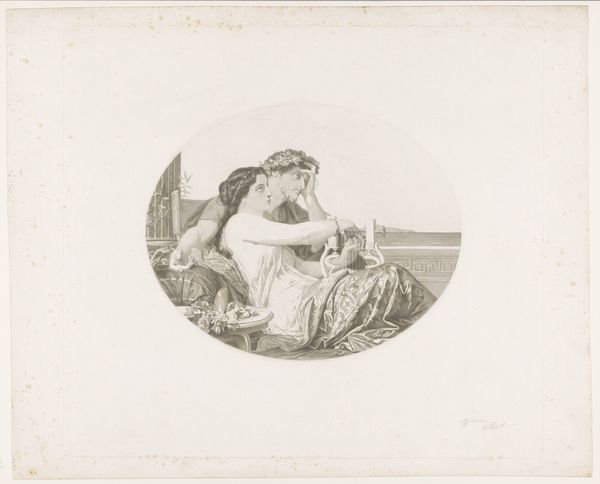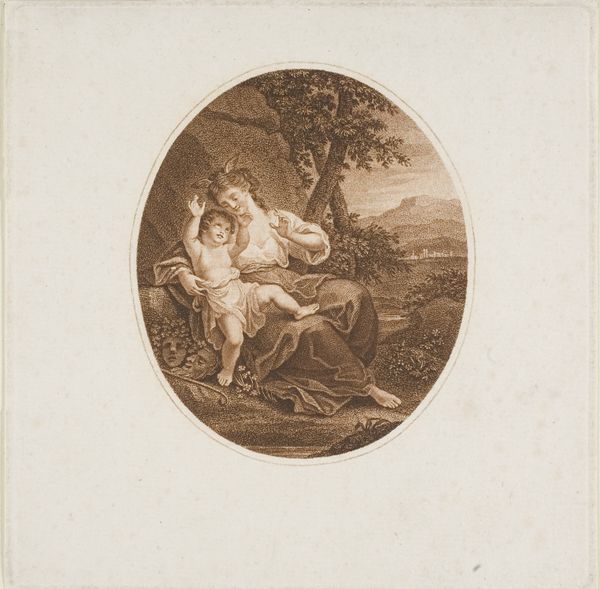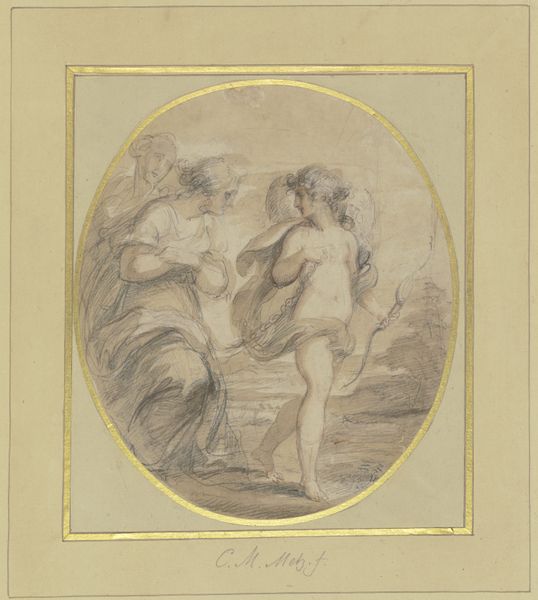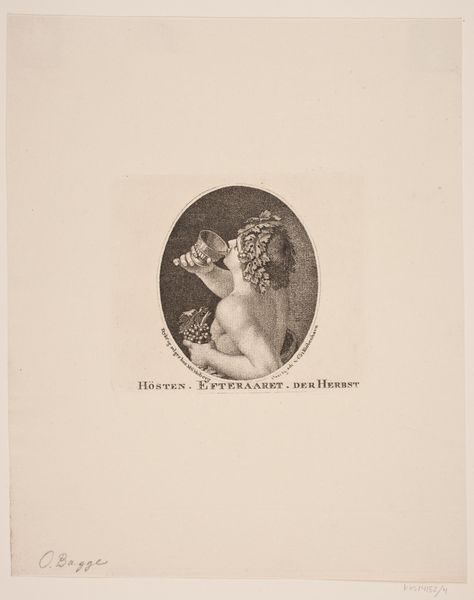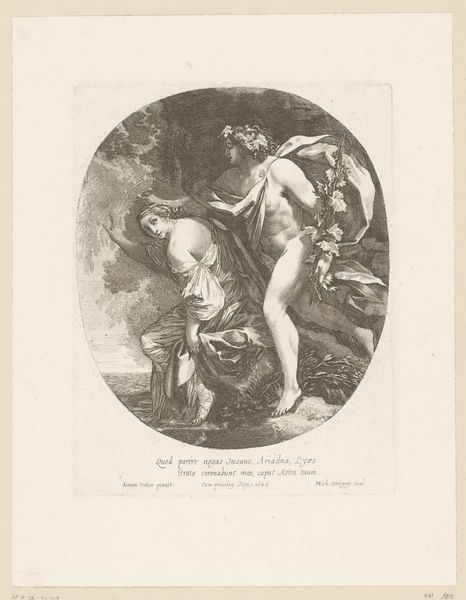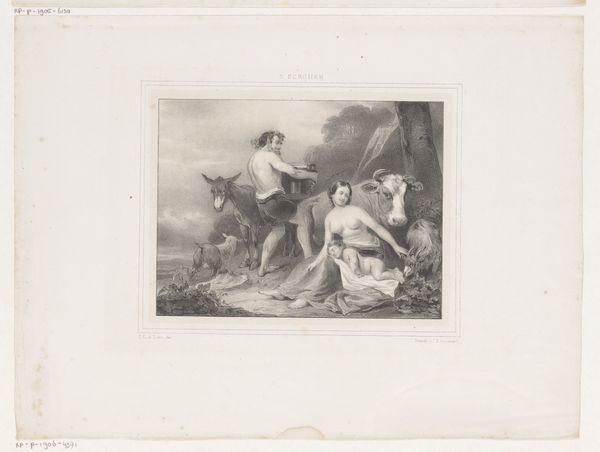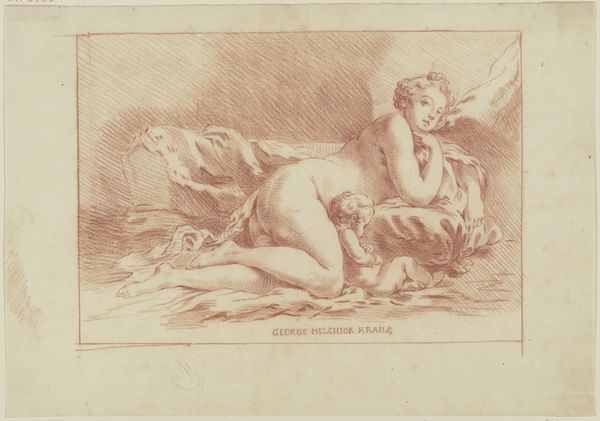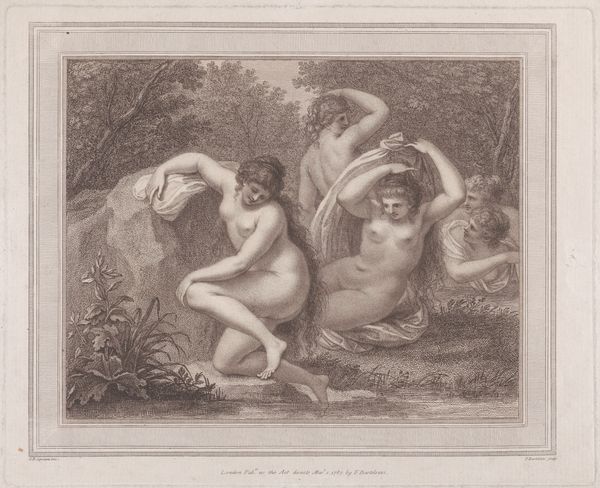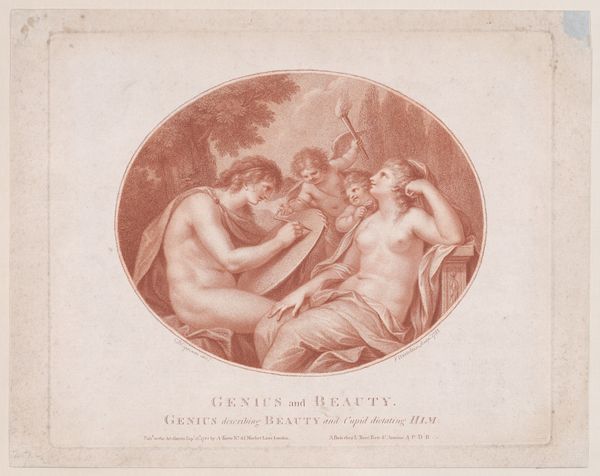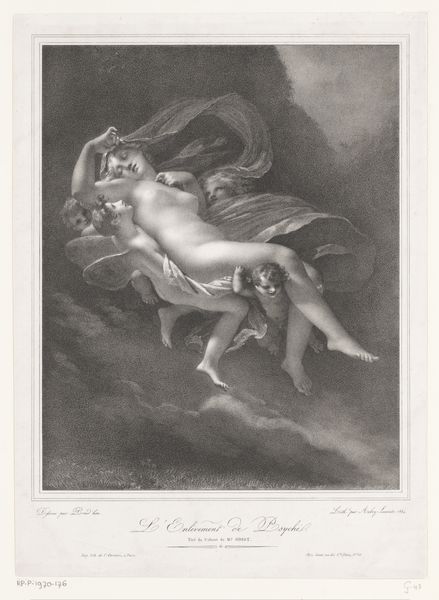
drawing, print, etching
#
drawing
#
neoclacissism
#
toned paper
#
water colours
# print
#
etching
#
female-nude
#
history-painting
#
nude
#
watercolor
Dimensions: sheet: 12 x 13 3/16 in. (30.5 x 33.5 cm)
Copyright: Public Domain
Curator: Oh, the sepia tones give this such a lovely, dreamy feel. Editor: Indeed! What we're looking at is a print titled "Diana and her Nymphs" made in 1783 by John Baldrey, currently housed here at the Metropolitan Museum of Art. It's an etching and watercolor wash on toned paper. Curator: It’s that sense of reverie that strikes me first. Diana, lounging, almost languid amidst this very idealized, classically inspired setting. There's a waterfall tucked in the background—all rendered in these gentle washes. It feels incredibly intimate, like stumbling upon a private ritual. Editor: That intimacy, I think, is key to understanding its appeal at the time. Remember, this piece was created within the Neoclassical movement, which aimed to revive classical ideals of beauty and virtue. Representations of mythological figures were very much en vogue as symbols of high culture and taste. Baldrey's interpretation aligns with a broader public interest in images featuring scenes from mythology, as they evoke stories and figures deeply entrenched in cultural awareness. Curator: Yes, and Diana, or Artemis to the Greeks, was a really potent symbol—representing both wild nature and chaste virtue, a contradiction maybe. What’s so intriguing is Baldrey's approach. He's using etching to create these delicate, almost ethereal figures, quite different from, say, the grand history paintings of the period. I wonder what liberties Baldrey's patron might have given him? Editor: Well, etchings and prints, in general, allowed for wider distribution of images, taking art outside elite circles, giving us cause to wonder whether we are looking at popular and even possibly sensational interpretations of established art. Though Diana and her nymphs were a favorite subject within artistic and noble circles, Baldrey would’ve no doubt felt pressure from institutions and perhaps more religious entities within England as the topic and style have some inclination towards sensual pleasures. Curator: Exactly! There's definitely an idealized, very constructed version of femininity on display, but also… I keep circling back to the color. This muted sepia almost washes away some of that heavy classicism, softens those very deliberate poses and draperies. What's your final read on it all? Editor: I'm left contemplating how access to artistic representations featuring nude or scantily dressed women are seen in the public eye as more access and education about different cultures are more readily shared. Perhaps we have John Baldrey to thank for one small, yet significant move in that direction. Curator: I love that! A lovely way to frame what we just explored.
Comments
No comments
Be the first to comment and join the conversation on the ultimate creative platform.
